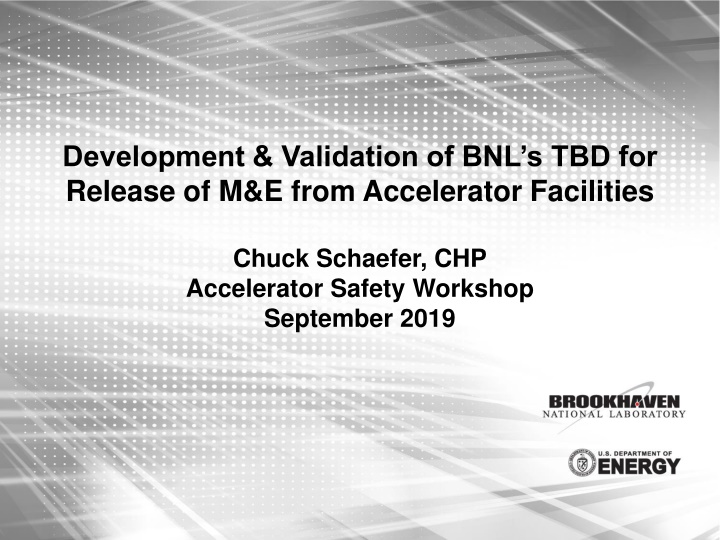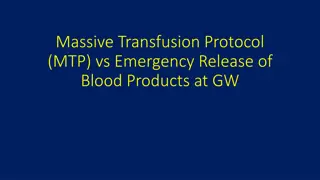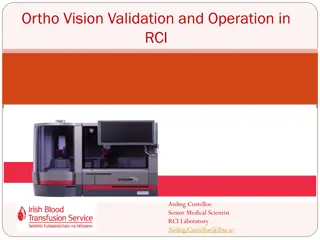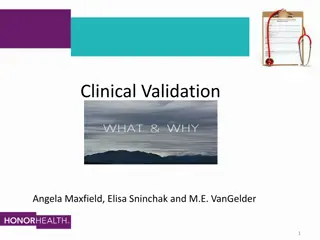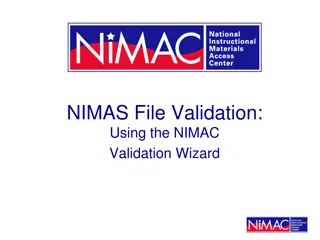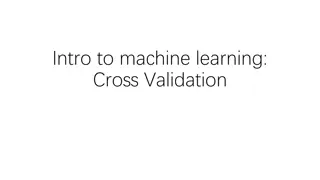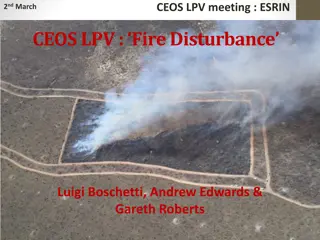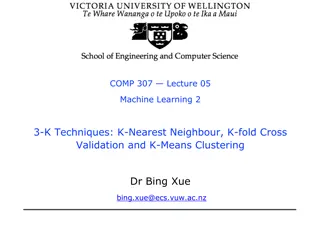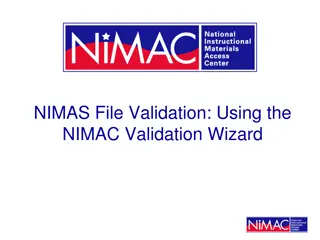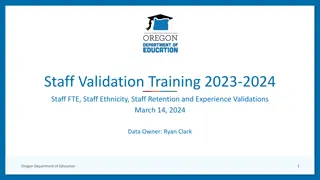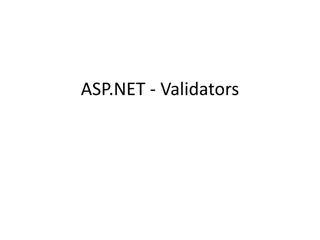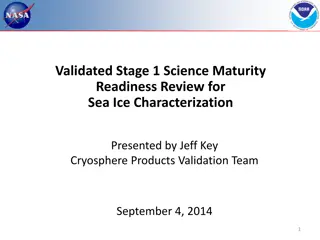Development and Validation of BNLs TBD for Release of M&E
National Synchrotron Light Source II Facility NSLS2 and Collider Accelerator Complex CAD have credited controls overseeing their operations. In early 2017, RCD Management focused on tier 1 volume activity for routine operational releases. Survey processes involved using Micro-R Meters for low-background scans. Issues around background levels and detection thresholds were identified, prompting further analysis. The effectiveness of Micro-R Meters as a release instrument was also evaluated after a comprehensive site-wide survey.
Download Presentation

Please find below an Image/Link to download the presentation.
The content on the website is provided AS IS for your information and personal use only. It may not be sold, licensed, or shared on other websites without obtaining consent from the author.If you encounter any issues during the download, it is possible that the publisher has removed the file from their server.
You are allowed to download the files provided on this website for personal or commercial use, subject to the condition that they are used lawfully. All files are the property of their respective owners.
The content on the website is provided AS IS for your information and personal use only. It may not be sold, licensed, or shared on other websites without obtaining consent from the author.
E N D
Presentation Transcript
Development & Validation of BNLs TBD for Release of M&E from Accelerator Facilities Chuck Schaefer, CHP Accelerator Safety Workshop September 2019
National Synchrotron Light Source II Facility NSLS2 has ~ 15 Credited Controls
Collider Accelerator Complex CAD has ~ 40 Credited Controls
In early 2017 RCD Management decided to pursue TBD Focus only on volume activity Tier 1 (IFB only) to be used for routine operational releases RCD s existing survey process for M&E was to use Micro-R Meters 99% of BNL s volume-activated material comes from C-AD
Survey Process On-Contact scan surveys using Micro-R Meters in low-background areas < 13 R/h Scan at 2 inches/sec Cover all accessible surfaces No formal direction provided for surveying small items
PROBLEM #1: Where did 13 R/h come from? Had been limiting BKG value for performing activation surveys since 1990s NO documentation existed for its basis: Lessons Learned #1 Recent analysis showed can t reliably detect volume activity of Group one R- Nucs (3 pCi/g) in a BKG of 13 R/h
PROBLEM #2: What is an Acceptable Value of BKG? Analyzed MDCR corrected for surveyor efficiency & converted to R/h 6 R/h is limiting BKG for reliably detecting 3 pCi/g of proxy R-Nucs (60Co, 22Na, etc.) MDCs calculated using Microshield for objects from 0.01 Kg - 100 Kg
60Co Activity Concentration for 2 R/h Detection Threshold 100 Activity Concentration Screening Level 10 pCi/g 1 0.1 10 100 1,000 10,000 100,000 Steel Mass, grams
PROBLEM #3: Micro-R Meter a Good Release Instrument? Spent 2 months performing a site-wide BKG survey & instrument comparison Used 3 Scintillators: Micro-R Meter, Bicron Micro-Rem, & Radeye Micro-R Meter exhibited best response behavior; lowest CV: Selected for use Many areas 6 R/h; Operations not restricted
Back to the TBD Asked 3 authors of DOE-STD-6004 to peer review the TBD Great comments!...but painful also Had to develop a basis for maximum 8-inch distance between survey paths for large items Instrument Sensitivity Study Had to develop facility-specific Bounding Conditions (e.g., how long is 60Co an adequate proxy for HTDs?)
Approval Process Addressed all reviewer comments and internally approved in November 2017 DOE-BHSO forwarded to HQ for their review (J. Blaikie and M. Epps) Only a couple questions, but no revision necessary DOE-BHSO Formally approved in January 2018
Post-Approval Validation Six RCTs individually surveyed 8 low- activity, small metallic items (0.3 3 kg) Observations recorded as either Rad or Non-Rad Samples subsequently characterized by gamma spectroscopy and offsite analysis for HTDs Probability of detection plotted using dose response model
Probability of Detection (P) for Low-Mass Items 1.2 1 0.8 P 0.6 68% at 3 pCi/g 0.4 0.2 0 0.01 0.1 1 Bq/g
Summary Instrument and site BKG studies proved very helpful Establish Max. BKG for performing release surveys early in TBD development Consider grouping small-mass items for survey whenever practicable to counter the mass effect Peer review is a must!!! Involve RCTs in the process
Thankyou Questions or Comments?
